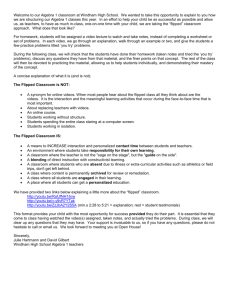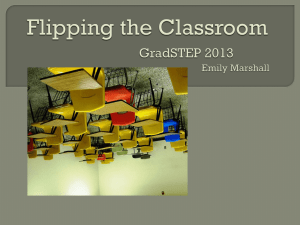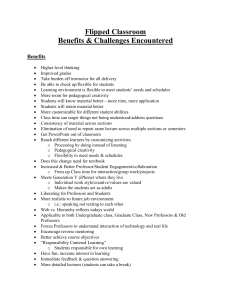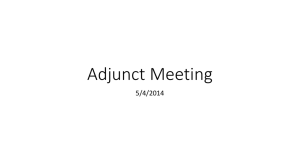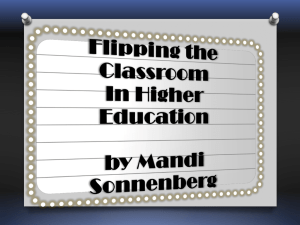File
advertisement
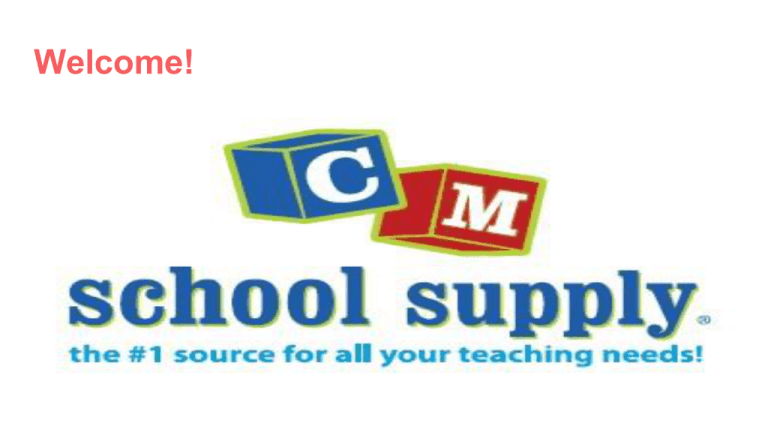
Welcome! Concordia University Irvine Welcomes You! Today’s facilitator: Dr. Belinda Karge Belinda.Karge@cui.edu History of Concordia University Irvine • Established in 1976; Current enrollment = 4,300 students • Member of the Concordia University System of the Lutheran Church-Missouri Synod (LCMS)—10 universities and 2 seminaries located throughout the United States • Has offered distance learning programs since 2001 • Fully accredited by WASC • Since 2007, 11 Substantive Change programs approved by WASC, including Ed.D. program Teaching is a calling… Answer that call at Concordia University Irvine CUI’s Teacher Credential Programs Multiple Subject (K - 6th) Self-contained classroom Single Subject (6th – 12th) Art, Biology, Chemistry, English, Geosciences, Math, Physics, Social Science, Spanish, Music, Physical Education CA Teacher Credential Program Education Specialist: Mild to Moderate Education Specialist: Mild to Moderate Program Early Childhood Special Education, Added Authorization: Ages 0-5 Three 3-unit courses added to your already completed Preliminary Ed Specialist Credential M.Ed All Preliminary Credential Courses PLUS 16 additional units •Edu 547 Brain-based Instruction •Edu 580 Educational Research •Two Elective Courses •Capstone Experience (1 of the following) Independent Research or Action Research Project A total 46 units for both Credential and Masters. Degree must be completed within 5 years. Doctoral Program Features Accommodative learning environment High contact with faculty Small cohort size and strategic groupings Distinct advantages of cohort membership Focused 3-year path to graduation Expect and assure scholarly research Streamlined dissertation track Doctoral Program Features Individual Learning Plans (ILPs) Rigorous and integrated curriculum (Systems Thinking) Inspire ethical leadership Educational trips (Washington, DC; People’s Republic of China) Competitively priced High Quality Faculty The Flipped Classroom: A Workshop Malia M. Hoffmann Malia.Hoffmann@cui.edu Catherine Webb Catherine.Webb@cui.edu What is Flipped Learning? Traditional lectured content available for outside of class viewing Podcasts/Vidcasts Slides Notes Students view content before class as homework Come to class, connect, collaborate, & create Why Flip? Promotes peer interaction and collaboration skills. Encourages higher student engagement. Makes learning central (rather than teaching). Fosters independent learning. Promotes increased individualized attention. Traditional vs. Flipped Teacher Instructs Students take notes Students follow guided instruction Teacher gives assignments Students have homework Teacher instructs lessons at home via video, blog, podcast, website etc. Students work in class through creative personalized projects and presentations. What do you do with the class time? You won the lottery: More time! Collaborate Writers’ Workshops Create Share Connect with communities Real world connections How do you do it? Choose your content Plan: script, question, provide a task Tell them to pause, rewind, practice 3 min per grade level for length ex: 3rd grade, 9 min Plan for class time differentiate, collaborate, connect Getting Started Ready to flip your class now? While every flipped classroom will vary depending on a number of factors (e.g. class size, content, professor, school resources, etc.), many follow a process similar to the following: 1. Give students an opportunity to gain first exposure to lectures before class Quick tip: Try recording your lectures and breaking them into smaller conceptual chunks. 2. Provide proper incentives for students to prepare for class Quick tip: Pairing lecture video with auto-graded assessments helps ensure that students are prepared for the subsequent in-class activities. 3. Facilitate engaged-learning activities in the classroom Quick tip: Possible activities include quizzing, small-group problem solving, extensions, applications, and peer feedback. Computer Tools To Produce Multiplatform (Mostly Free!) Socrative Panopto Screencast O'Matic QuickTime Jing Screencastify (Google App) Mobile Applications for Creations Knowmia Educreations Showme ScreenChomp iMovie Built in camera on your mobile Created Content, Now What? Post your video/audio file. YouTube - Create a Channel Vimeo Your School’s LMS Free LMSs Canvas Edmodo Google Classroom Where to post? G+ Community FB group Blog Wiki iTunes U Course Remind - Text it to them Fish Tree (LMS) Twitter Where do I get resources? Article Something Borrowed Team with your Colleagues Flippedlearning.org An ELA High School Example Professor Mehring’s English Class Public Resources YouTube: use keywords: Flipped and topic (i.e.: Characterization) Teacher Tube iTunes U - The Flipped Side of Learning The Teaching Channel Kahn Academy: Math, Science, Test Prep... Common Craft: Tech, Social Media, Net Safety... Want more? Pitfalls Professors don’t “sell” the flipped classroom Classroom space is not conducive to flipping Students don’t show up for class In-class activities are not relevant to out-of-class lectures Instructors assign students too much work Not all students have equal access to online materials Instructors don’t realize the amount of preparation necessary for in-class activities Students aren’t completing work assigned for outside of class Instructors have difficulty accommodating the varying ability levels of their students during inclass activities. Instructors are unable to successfully flip large lectures Professors don’t engage fellow instructors about their flipped experiences Professors still act as the “sage on the stage” rather than the “guide on the side” Exit Quiz Access www.socrative.com ● Select: student login ● Enter Code: DRWEBB ● Enter: your name ● Begin the quiz or...Scan QR code and ● Enter Code: DRWEBB Questions? Door Prizes Thank you for coming!

